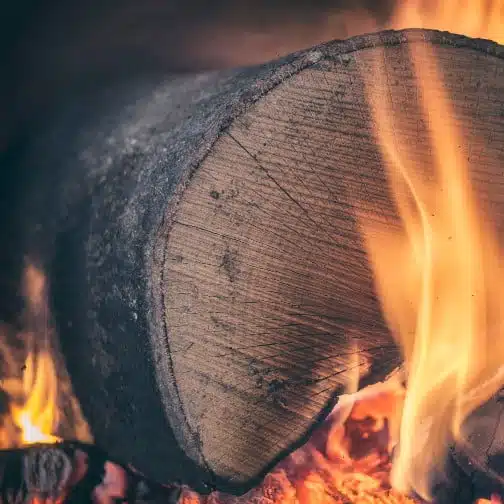fireplace FAQ
What Should I Know About Soot As A Homeowner?
Short Answer: Soot is a dark powdery substance that is composed mostly of carbon particles and formed when wood, coal, or oil is burned. As a homeowner, you should know the common sources of soot, the health implications of soot, how to identify, remove, and prevent it.

As a homeowner, it’s essential to understand the various issues that can affect the safety, comfort, and value of your home. One such issue is the presence of soot. While often overlooked, soot can have negative impacts on your home’s appearance, air quality, and overall health.
As experts in chimney and fireplace installation, maintenance, and repair, Lindemann knows all about soot. We will discuss what soot is, its sources, the health and environmental implications, and how to identify, remove, and prevent soot buildup in your home.
What Is Soot And How Is It Formed?
Soot is a fine black or dark brown powder that consists primarily of carbon particles, formed during the incomplete combustion of organic materials like wood, coal, and oil. Incomplete combustion occurs when there is insufficient oxygen available for a fuel to burn completely, resulting in the production of soot and other byproducts.
Soot particles are tiny, ranging from about 0.01 to 10 micrometers in size, which allows them to easily become airborne and inhaled. The composition and characteristics of soot depend on the type of fuel being burned and the combustion conditions.
In addition to carbon particles, soot can also contain various organic compounds, such as polycyclic aromatic hydrocarbons (PAHs), which are harmful to human health and the environment. Additionally, soot can include traces of metals, acids, and other chemicals that were present in the fuel or generated during combustion.
Common Sources Of Soot
Understanding the sources and formation of soot in your home can help you take appropriate steps to minimize its production and potential negative effects on your living environment. In residential settings, common sources of soot include the following:
- Fireplaces and wood stoves: Burning wood or other solid fuels in fireplaces and stoves can release soot particles into the air, especially if the combustion process is inefficient or the fuel is not properly seasoned.
- Candles and oil lamps: When burned, candles and oil lamps emit soot as a byproduct of the combustion process. The amount of soot produced can vary depending on the quality of the candle or oil used and the presence of any additives, such as fragrances or dyes.
- Cooking appliances: Cooking with gas stoves, ovens, and grills can generate soot, particularly if the appliances are not well-maintained or if cooking oils and food residues are allowed to accumulate.
- Heating systems: Furnaces, boilers, and other heating systems that burn fossil fuels like oil, coal, or natural gas can produce soot as a result of incomplete combustion. Poorly maintained or malfunctioning equipment can increase soot production and decrease overall efficiency.
Health And Environmental Implications Of Soot
Soot can have a significant impact on indoor air quality, as it can become airborne and easily inhaled. Prolonged exposure to soot particles can lead to respiratory and cardiovascular health problems, including asthma, bronchitis, and heart disease.
Additionally, soot contributes to environmental pollution by releasing harmful chemicals into the atmosphere. To minimize these risks, proper ventilation and regular maintenance of potential soot sources are crucial.
Identifying Soot Buildup In Your Home
To identify soot accumulation in your home, look for these common signs:
- Discoloration on walls, ceilings, and furniture: Soot can leave a fine black or brown residue, which can cause staining and damage to surfaces.
- Unpleasant odor: A persistent, acrid smell may indicate soot buildup.
- Persistent cough or respiratory issues: If you or your family members experience ongoing respiratory problems, it could be a sign of poor indoor air quality caused by soot.
Regularly inspect potential soot sources, such as chimneys, fireplaces, heating systems, and kitchen vents, to ensure they are clean and functioning properly.
Soot Removal And Prevention
If you suspect a soot problem in your home, consider hiring the professionals at Lindemann to assess the situation and perform the necessary cleanup. However, for smaller-scale issues, you can try DIY cleaning methods like using soot sponges, specialized cleaning solutions, and vacuuming with HEPA filters.
To prevent soot buildup, follow these preventative measures:
- Regular chimney sweeping: Schedule annual chimney inspections and cleanings to remove creosote and soot buildup.
- Properly vent appliances: Ensure that all appliances, including stoves and heating systems, are properly vented to the outdoors.
- Avoid excessive use of candles and oil lamps: These can contribute to soot accumulation. Opt for low-soot producing alternatives when possible.
- Choose low-soot producing alternatives: Invest in energy-efficient heating systems, clean-burning candles, and high-quality cooking appliances to minimize soot production.
Conclusion
As a homeowner, it’s important to be proactive in addressing issues that can affect the safety and health of your living environment. By understanding the risks associated with soot and taking appropriate steps to identify, remove, and prevent its buildup, you can ensure a cleaner, healthier home for you and your family.
If you have a masonry chimney and find chunks of mortar or bits of orange clay flue tile in your soot residue, contact us immediately. Don’t wait until the problem becomes unmanageable; start taking action today to keep your home soot-free.
